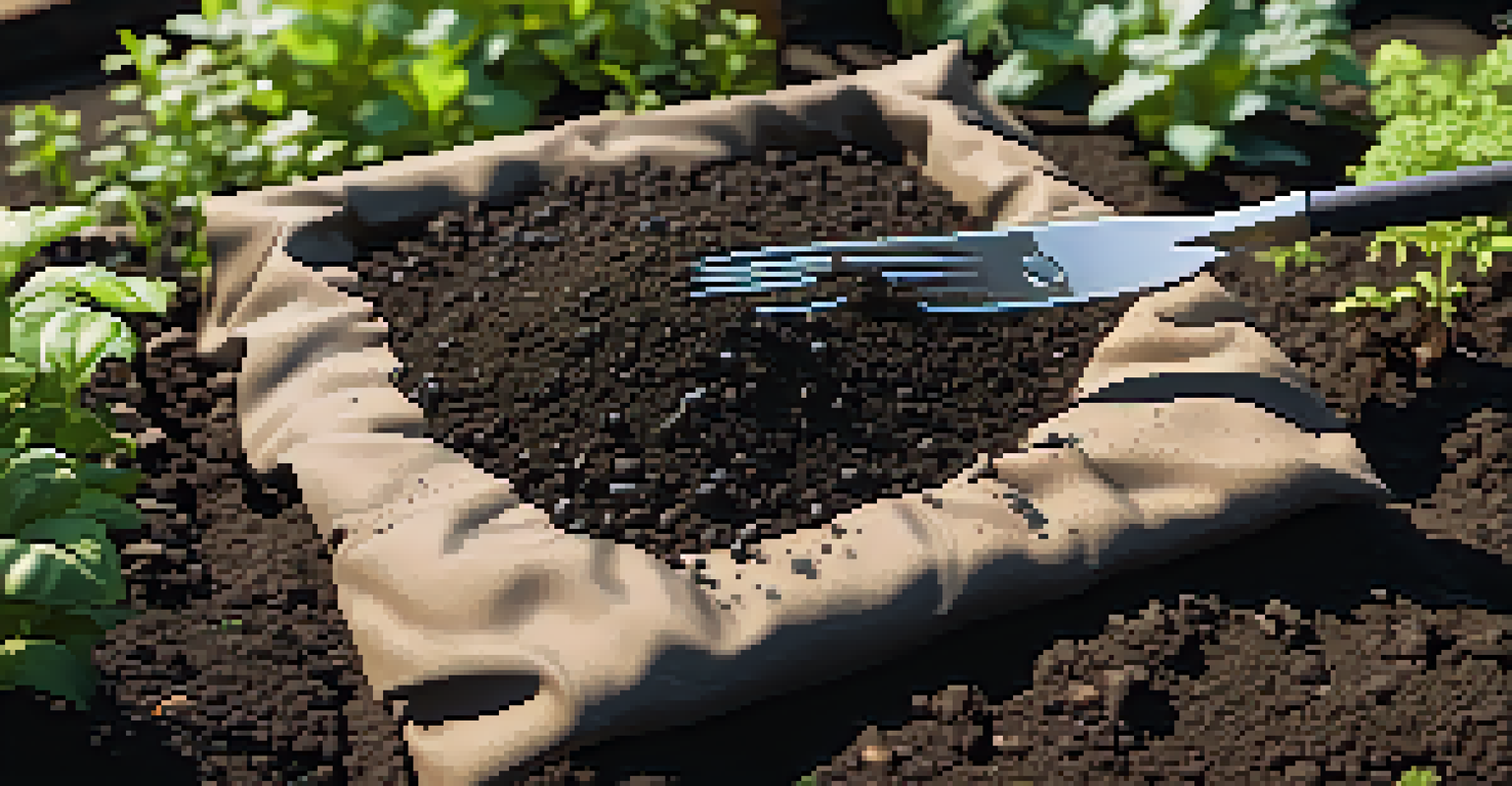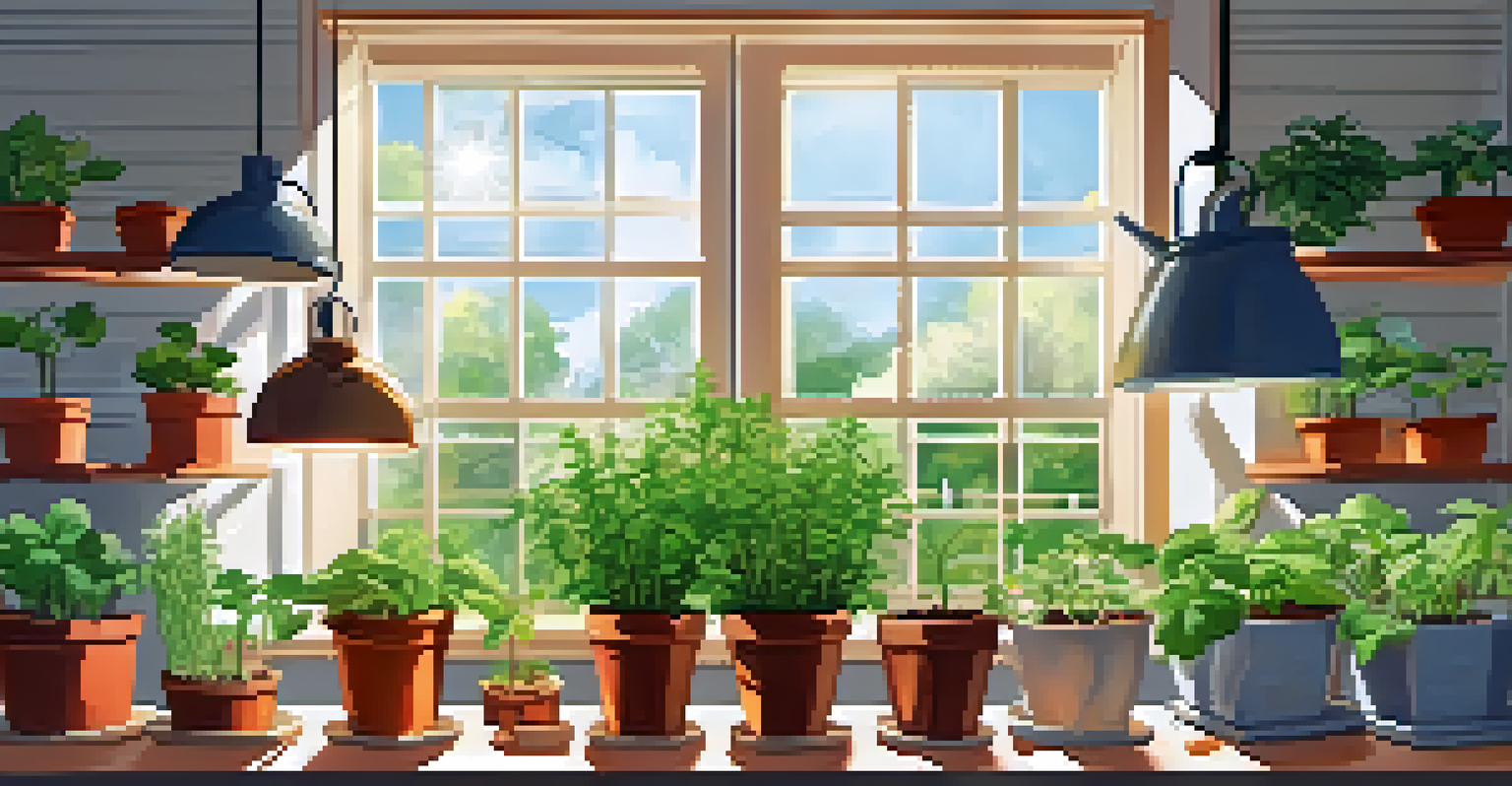Spring Garden Preparation: Essential Tips for Homeowners

Assess Your Garden Space and Layout for Spring
Before diving into planting, take a moment to walk around your garden. Observe the areas that receive the most sunlight and shade throughout the day. This will help you determine which plants will thrive in specific spots, ensuring a vibrant garden come springtime.
To plant a garden is to believe in tomorrow.
Consider the layout of your garden as well. Think about how you want to arrange your flowers, vegetables, or shrubs. A well-thought-out design not only enhances the aesthetic appeal but also allows for better air circulation and growth.
Lastly, take note of any existing plants that might need pruning or removal. By clearing out the old growth, you can create a clean slate for new beginnings and set the stage for a flourishing spring garden.
Testing Soil Health for Optimal Growth
Healthy soil is the foundation of any thriving garden. Start by testing your soil’s pH level and nutrient content, which you can easily do with a home testing kit. This information will guide you in choosing the right amendments to enrich your soil.

If your soil is too acidic or alkaline, don't fret! You can add lime to raise the pH or sulfur to lower it. Additionally, incorporating organic matter like compost will improve soil structure, enhance moisture retention, and provide essential nutrients.
Assess Garden Space and Layout
Understanding sunlight and layout is key to selecting plants that will thrive in your garden.
Regularly testing your soil not only boosts plant health but also helps prevent issues down the line. A well-nourished garden starts with understanding and improving its soil.
Clearing Debris and Preparing Garden Beds
As winter gives way to spring, it's time to clear away the debris that accumulated over the colder months. Remove dead leaves, branches, and any weeds that have sprouted. This not only tidies up your space but also reduces the risk of pests and diseases.
The best time to plant a tree was twenty years ago. The second best time is now.
Once your garden is clean, focus on preparing your garden beds. Loosen the soil with a garden fork or tiller, and amend it with compost to enhance its nutrient profile. This process aerates the soil, making it easier for plants to establish strong root systems.
Preparing your beds properly sets the stage for successful planting. A clean and well-aerated garden bed means your plants will have the best chance to flourish come spring.
Selecting the Right Plants for Spring Gardening
When it comes to choosing plants, consider your local climate and the USDA hardiness zone. Opt for varieties that are known to thrive in your area during spring. This ensures that your plants will adapt well and flourish in their new home.
Don’t forget to mix perennials with annuals for a dynamic display. Perennials come back year after year, while annuals offer a burst of color that can change from season to season. This combination creates visual interest and a more resilient garden.
Healthy Soil for Thriving Plants
Testing and amending your soil ensures optimal conditions for plant growth and health.
Additionally, consider native plants, as they often require less maintenance and are better suited to local conditions. By selecting the right plants, you’re setting yourself up for a successful and beautiful garden.
Starting Seeds Indoors for an Early Start
If you’re eager to get a jump on your gardening, consider starting seeds indoors. This allows you to plant earlier in the season and gives your plants a head start before the last frost. Use seed trays and a quality potting mix to ensure optimal growth.
Be mindful of the light and temperature conditions for your seedlings. A sunny windowsill or a grow light can provide the necessary warmth and light for your seeds to thrive. Regularly check moisture levels to keep your seedlings healthy.
Starting seeds indoors can be a rewarding experience. Not only do you get to watch your plants grow from the very beginning, but it also allows for a more diverse garden right from the start.
Implementing a Watering Schedule for New Growth
Watering is crucial, especially as new plants establish their roots. Develop a consistent watering schedule based on the needs of your plants and the weather conditions. For most gardens, this means watering deeply but less frequently to encourage deep root growth.
Consider investing in a rain gauge or a soil moisture meter to help you monitor the water needs effectively. This way, you can avoid overwatering, which can lead to root rot or other issues.
Effective Watering and Mulching
A proper watering schedule and mulching strategy can enhance moisture retention and control weeds.
A well-planned watering routine not only supports plant health but also conserves water. By being mindful of your garden’s water needs, you’ll help foster a sustainable environment.
Mulching for Moisture Retention and Weed Control
As your garden begins to flourish, applying mulch can be one of the best things you do. Mulch helps retain moisture in the soil, reducing the need for frequent watering. It also regulates soil temperature, providing a consistent environment for your plants.
Additionally, mulch acts as a natural barrier against weeds. By blocking sunlight, it inhibits weed growth, allowing your plants to thrive without competition. Organic mulches, like wood chips or straw, can also enrich the soil as they decompose.

Incorporating mulch into your garden preparation is a simple yet effective strategy. It not only supports plant health but also simplifies your gardening tasks throughout the growing season.